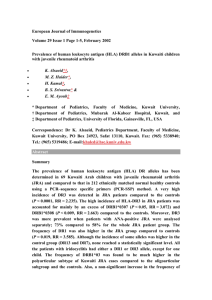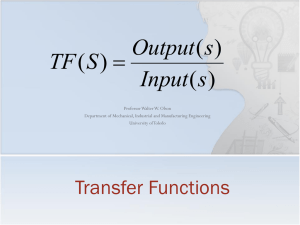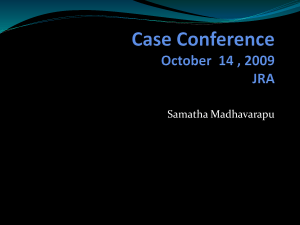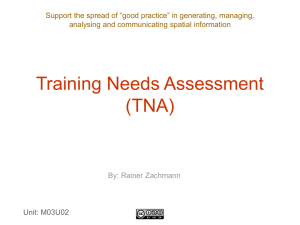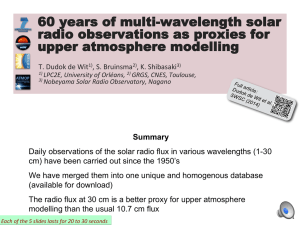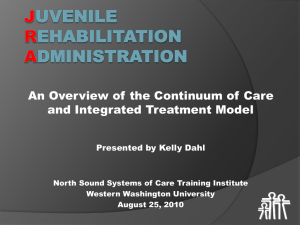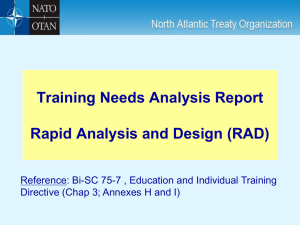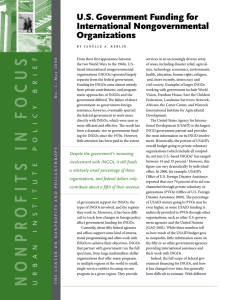Improving and extending the European observation capacity for non
advertisement
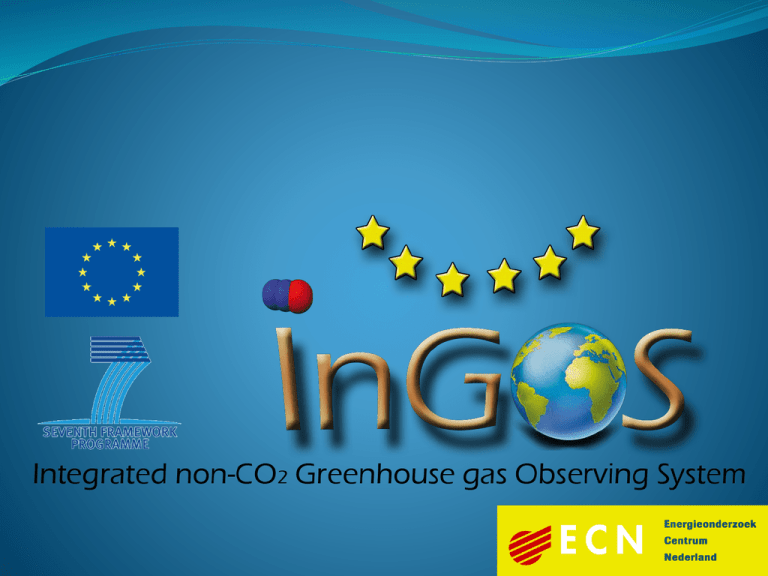
InGOS objective & means Infrastructure project: Integrating Activities Budget 10 M€, EU 8 M€ 34 partners, 14 countries, 24 observing stations 1 October 2011 – 1 October 2015 Will integrate the non-CO2 observations in ICOS infrastructure Builds on: CHIOTTO, SOGE, CarboEurope, GHGEurope, IMECC etc. Coordination: ECN, NL Non-CO2 gases and climate Forcing=57% CO2,ff Montreal protocol succesful (ODS) Non-ODS emissions still increase N2O now most important ODS Emissions very uncertain Big emission reduction potential Montzka, Dlugocencky & Butler, Nature, 2011 ODS=Ozone Depleting Substance Montzka, Dlugocencky & Butler, Nature, 2011 a = continued 2008 emissions b = -80% longlived non-CO2 2050 c = -80% CO2 2050 d = -80% all GHG 2050 Beware of the possible feedbacks (lifetime, natural emissions)! Verification of reductions and monitoring of natural sources will be important! Montzka, Dlugocencky & Butler, Nature, 2011 General features of NCGHG mixing ratios; InGOS targets Low abundances Small signal to baseline ratio High demands for precision and accuracy Complex equipment High running costs InGOS will improve: Cost of operation Quality of measurements Coherence of the network Number of sites and frequency of observations InGOS infrastructure (Flux) sites Tall towers Ocean observations Airborne measurements Total column (up) Satellite data (down) Data centre Isotope Lab Cal gas Lab The InGOS gases Methane (CH4) Nitrous Oxide (N2O) Sulphur Hexafluoride (SF6) Hydrogen(H2) CF4 C2F6 SO2F2 C2Cl3F3 CFC 113 Halocarbons (many different species) C2H2F4 C2H3Cl2F HFC-134a HCFC-141b CBrClF2 CCl4 C F 3 8 Halon1211 Radon (222Rn) InGOS Structure Network (Na1-6) Access TNA Research JRA Service SA InGOS Structure NA1: Running the project & reporting to EU NA1 Network (Na1-6) Access TNA Research JRA Service SA InGOS Structure NA 2,3,4: Harmonisation NA2 Historic data Network (Na1-6) NA3 New Data NA4 New Data Access TNA Research JRA Service SA InGOS Structure NA 2,3,4 Calibrations Network (Na1-6) Access TNA Research JRA Service SA Atmosphere (CEA) Flux data (UNITUS) Halocarbons (NILU) InGOS Structure NA 5: Harmonisation for Flux data Network (Na1-6) Atmosphere (CEA) Flux data (UNITUS) Halocarbons (NILU) Access TNA Research JRA Service SA InGOS Structure NA 6: Ocean data Network (Na1-6) Access TNA Atmosphere (CEA) Flux data (UNITUS) Halocarbons (NILU) MEMENTO (IFM-GEOMAR) Research JRA Service SA Access to stations & facilities 6 ‘super’-sites Stations where JRA campaigns are hosted 14 observing stations Network (Na1-6) 2 aircraft for CH4 flux variability Calibration service 13CH 4 isotope service Access TNA Research JRA Service SA Supersites CABAUW 200m NL (ECN) Weybourne UK (UEA) GGLES London UK (RHUL) SMEAR II Hyytiala 127m Fin (UHEL) Willow Field & beech forest Dk (RISOE) Easter Bush UK (CEH) Observing stations Jungfraujoch Grignon & Orleans Las Majadas Mace Head London (GGLES) Angus tall tower Kasprowy Wierch Hegyhátsál tall tower POLWET Lutjewad Horstermeer Pallas Norunda Networking objectives Integrate European facilities for NCGHG observations Linking the different communities for CH4, N2O, H2, halocarbons, tracers, atmosphere, ecosystem flux, ocean Improve the quality of historical, current and future NCGHG obs. (concentrations, fluxes, atmosphere & ocean) Prepare expansion of the network in undersampled regions Access and Services Provide access to observation sites and facilities Provide NRT data for CH4, N2O, SF6 and H2 data (building on IMECC/ICOS) Provide uniform databases of observational data Halocarbons: Fluxes: Atmosphere: Ocean: NILU/Geomon -> ALE-GAGE UNITUS/ICOS ETC -> Fluxnet LSCE/ICOS ATC -> GAW Memento JRA: research Test and further develop new (optical) sensors and observation strategies Modelling: analyse the observations and support the network development Improved top-down emission estimates Uncertainty estimates of derived emissions Validation of model results Evaluate 13CH4 observation strategy Bergamaschi et al, 2011 (in prep.) (Inverse) Modelling Bergamaschi et al, 2011 (in prep.) Inverse modelling of European methane JRA continued Integration of in-situ data with remote sensing -> TCCON- Europe network Develop continuous isotope observations for methane and maintain reference scale Improve the halocarbon measurement techniques Combine tall tower concentration obs. with flux tower observations into regional scale flux estimates CO2 N2O CO CH4 CO2 O2 b1 Σg+ – X3Σg- O2 a1∆g – X3Σg- Some products (out of 96 deliverables) Unified and improved historic dataset of non-CO2 GHG’s Continuation of coordinated datasets contributing to GEOSS Traveling FTIR and 222Rn system Top down emission estimates for Europe Capacity building in undersampled regions Dissemination: Reports, papers Workshops Summer schools Website Databases More info… DoW available on website Leaflets on website/request from project office Coordinator: a.vermeulen@ecn.nl Dissemination & Outreach: hensen@ecn.nl / a.bleeker@ecn.nl

